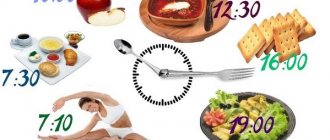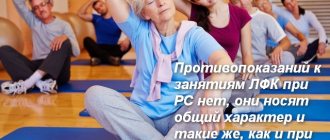Author
Korobkova Irina Grigorievna
Head of the Department of Post-Stress Conditions and Sleep Disorders
Chief Network Specialist
Candidate of Medical Sciences
Psychotherapist
Publication date: 04/07/2021
until October 31
We're giving away RUR 1,000 for all services per visit in October More details All promotions
Regular exercise isn't just good for your body. They can help us cope with stressful situations.
In the shadow of stress
Stress can't be avoided, but it can be controlled
As they say, stress cannot be avoided, but it can be controlled.
There are many factors that contribute to the development of stress. A stressful background is created by health problems, financial difficulties, work; Even our normal reactions to everyday life can lead to increased anxiety and “feed” stress.
Statistical surveys show that almost everyone has to deal with stress. According to ROMIR, 95% of our country’s residents experience stress in one way or another. VTsIOM data differs slightly: according to them, only 9% of Russians are not familiar with stress. And 8% of the population experience stress constantly.
How many people are stressed at one time? According to the results of one of the studies (data from the Kemerovo region for 2013 were used), the prevalence of stress was 22.6%. At the same time, stress was registered more often in women than in men (28.1% versus 11.7%).
We cannot completely avoid problems. Avoiding problems is not the best tactic. But by developing a habit of regular exercise, you can add an effective stress relief tool to your arsenal.
Complex 3. Meditation
The most general definition of the concept of “meditation” in psychological dictionaries is: “a method of mental training in which intense, penetrating reflection occurs, immersion in an object, an idea, which is achieved by concentrating on one object.” The recommendations collected in this block concern how to conduct a visual meditation session on your own. Visual meditation is a variation of traditional meditation that is based on the use of not only visual meanings, but also the senses: taste, touch, smell and sound. When used as a relaxation technique, visualization involves imagining a scene in which you feel free from tension and anxiety.
Set of exercises:
- Choose a quiet and secluded place, with nothing to distract you. Find a comfortable position. It is not recommended to lie down; it is better to sit on the floor, in a chair, or try sitting in the lotus position.
- Select a focal point. It can be internal - an imaginary scene, or external - a candle flame. Therefore, the eyes can be open or closed. At the beginning, it is very difficult to concentrate and avoid distracting thoughts, so the focus point should have a strong meaning, understandable and clear, so that you can return to it at any time.
- The focal point should definitely be something calming for you. It could be a tropical beach at sunset, a forest clearing, or an orchard in a village near your grandparents’ house, where you visited as a child. Visual meditation can be done in silence, or you can turn on relaxing music or an audio recording with meditation tips.
- Try to use all your senses as much as possible. For example, your focal point is a forest. Imagine that you are walking through a clearing, and cold dew falls on your feet, you hear the singing of many birds, smell the pine, breathe in the clean air deeply. The picture should be as lively as possible. Meditate for 15-20 minutes.
Remember, relaxation will not save you from problems, but it will help you relax and distract yourself from unimportant details, so that later you can tackle the solution with renewed vigor.
How does exercise help relieve stress?
Aerobic exercise (moderate-intensity exercise that uses oxygen for energy) increases your heart rate, causing the body to release endorphins, chemicals that act as a natural pain reliever and improve your mood. After exercise, we experience a natural emotional uplift.
Endorphins not only relieve pain and improve your mood, they also help us sleep better. The combination of these effects can reduce the effects of stress. By exercising regularly, we get the opportunity to enjoy these benefits more often.
Regular exercise (as opposed to one-time exercise) also has a cumulative effect, which manifests itself in improving the level of physical fitness, increasing endurance and losing weight. These are all positive changes, and the fact that we are changing for the better increases our self-esteem. And with the growth of physical strength, emotional strength also increases, and mental well-being improves.
One more thing. During times of stress, it is human nature to concentrate on the problem. Under the weight of worries, it is difficult to think about anything else. And we overwhelm ourselves, feeling that this oppression is increasing. But having inserted physical exercise into our daily schedule, we will be forced to switch. And even a short-term complete redirection of attention to something else can bring vital relief and relieve stress. In addition, coming to the gym can help you find a new circle of communication and additional emotional support.
Relaxing breathing techniques
What effective calming breathing techniques can be used without prior preparation? Let's look at the most basic and safe ones.
Practice concentration at dawn. Crimea
Lengthening the exhalation
Why should you focus on exhalation? The fact is that a deep breath may not always bring calm, since it is associated with the sympathetic nervous system. But exhalation activates the parasympathetic nervous system and affects our body’s ability to relax and calm down.
Instead of taking a deep breath, slowly exhale completely. Push the air out of your lungs and then inhale without focusing on this process. Try exhaling a little longer for 2-3 minutes. By the way, this technique can be performed while sitting, lying down or standing.
Belly breathing
This practice engages the diaphragm, which improves the functioning of internal organs and actively supplies them with oxygen. If you are just starting to practice diaphragmatic breathing, lie down on the floor for comfort, place one hand on your stomach, the other on your chest. Try to move your stomach more, not your chest. Inhale and exhale through your nose. Once you have mastered belly breathing while lying down, you can move to a sitting position with crossed legs. Practice this relaxation breathing every day for 10 minutes.
Concentration on breathing
What we think about during breathing exercises directly affects our calmness. Try not to think about current affairs, do not plan. Bring your attention to your body. How do you feel when you inhale and exhale? Mentally walk your gaze over the body. You may find tension or discomfort that previously eluded you. Focus on how your belly rises and falls as you breathe.
Certain calming breathing techniques have been widely used in yoga for thousands of years.
Mentions of breathing exercises - pranayama can be found in Patanjali's work "Yoga Sutras", in "Hatha Yoga Pradipika", "Shiva Samhita", "Gheranda Samhita" and in later works.
Moreover, breathing practices were used not only to calm and improve physical condition, but also for spiritual growth and development.
Nadi Shodhana
This is alternate breathing through the right and left nostrils. Sometimes this pranayama is called “Anuloma Viloma”. This is a very effective breathing technique for calming the nervous system. It is based on balancing the right and left energy channels (pingala and ida), as a result of which the necessary balance of thoughts and feelings is achieved.
This is interesting
Nadi shodhana pranayama. Stage 1
Translated from Sanskrit, the word nadi means “psychic passage” or “special path” along which prana flows through the body. The word shodhana means "purification". Thus, it is a practice by which the prana pathways are cleansed and released.
To perform, sit with your back straight and first exhale. Use your right thumb to close your right nostril and inhale slowly through your left nostril. Then close your left nostril with the ring finger of your right hand, release your thumb and exhale through your right nostril. Repeat the inhalation through the right nostril, close it with your index finger and exhale through the left nostril. A complete breathing cycle includes inhalation and exhalation through both nostrils. Do up to ten cycles and notice how your body reacts. When done correctly, you can feel the mind and body relax.
Ujjayi
This technique is sometimes performed during the practice of hatha yoga. Breathing through a closed glottis helps activate the parasympathetic nervous system and calms the mind.
While sitting, inhale evenly through both nostrils. Hold your breath for a second, then close your glottis slightly, as if you are about to whisper something, and exhale slowly through both nostrils. As you exhale, you should feel the air passing across the roof of your mouth and hear a slight hissing sound. Repeat ujjayi 20 times.
This is interesting
Holding your breath: what is its secret?
In this article we will talk about what breath holding (Kumbhaka) is, what it is intended for and what effect it has on a person’s physical, mental and spiritual state.
Breath stretching
This breathing technique is used not only as a sedative, but also as a meditative one. The essence of the implementation is that the practitioner inhales through both nostrils, equal in duration to the exhalation. Prepared practitioners can lengthen the inhalation and exhalation at their discretion, adding 1 second per inhalation and exhalation. This type of breathing can be performed from a few minutes to several hours.
Light breathing exercises have no contraindications if performed correctly. However, some precautions need to be taken into account. General contraindications include:
- high blood pressure;
- heart disease;
- bronchial asthma in the acute stage;
- nose bleed;
- recent head injury;
- bad feeling.
What exercises are we talking about?
Jogging will give you positive emotions
Jogging will give you positive emotions
A 20-minute walk in the park or a visit to a Pilates studio can help. Going to the gym or going for a long run can also help. Each type of exercise has its own benefits, and different exercises will suit different people.
You may find that your tension is relieved by breathing in fresh air and choose breathing exercises or focus on the soothing rhythm of repetitive muscle movement. Just as stress is unique to each person, so are the ways we cope with it.
Calming tips for the stronger sex
Men are also sometimes vulnerable to stress and unpleasant emotions. There is an opinion that representatives of the stronger sex should not allow feelings to show or cry. But if you “carry everything inside you,” the body can react psychosomatically. Stomach ulcers, hypertension, etc. will appear. And often men “drown” troubles with alcohol. This is no less harmful to the body.
It is very important to get rid of unpleasant emotions in a timely manner. How can a man do this? There are several psychological techniques for relieving stress for the stronger sex. One of them is wall pushing. You need to put your hands on the wall and push with force. Then relax for a few seconds. Then repeat the same thing. This exercise promotes the production of endorphins.
You can beat a pillow, scream in an empty room. But don't take it out on children or animals. Fishing and hunting, walks in the forest help some men. Others go to meet friends. Dancing helps relieve stress.










